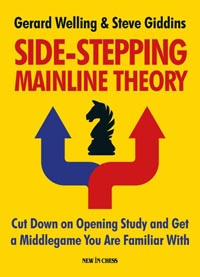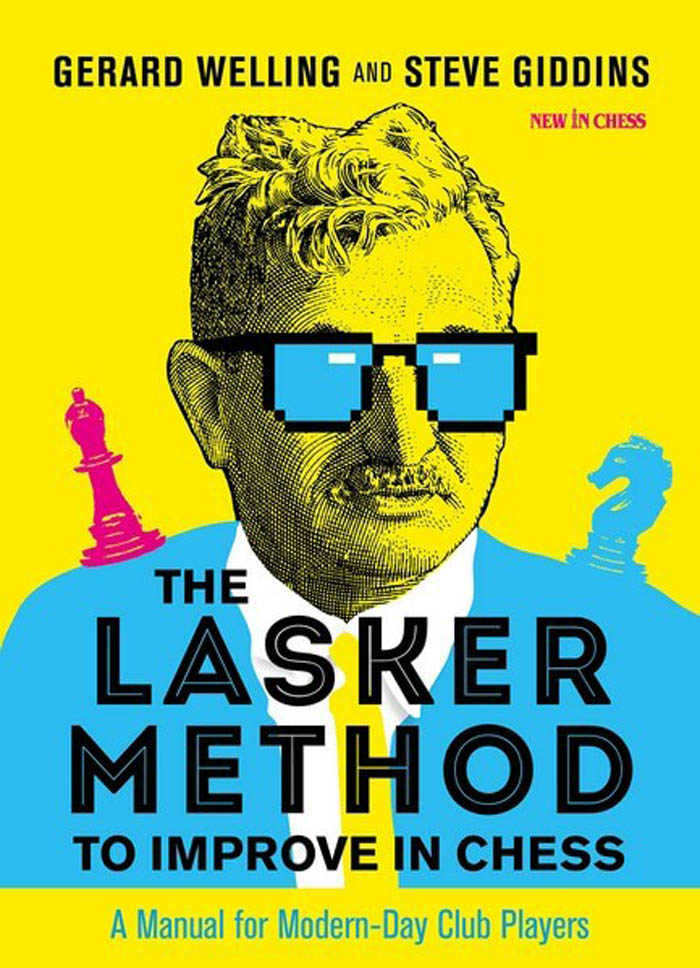Side-Stepping Main line theory
Gerard Welling

Formato papel
[Disponible]
PVP. 22,95€
Ficha técnica
- Editorial: New in Chess
- Fecha de edición: 1 de Septiembre de 2019
- ISBN: 9789056918699
- Fecha de edición: 2019
- Peso: 500gr
- Dimensiones:
170 mm x 245 mm
- Nº páginas: 272
- Materias: Informática / Aperturas /
Tienda / Informática / Aperturas /
Side-Stepping Main line theory
¡Dedica más tiempo a lo realmente decisivo para tus partidas!
El jugador promedio dedica demasiado tiempo a estudiar teoría de aperturas. En su momento, el campeón mundial Emanuel Lasker argumentó que los aficionados con ánimo de mejorar deberían dedicar tanto sólo un 5% de su tiempo en aperturas. Actualmente los jugadores de club dedican aproximadamente el 80%, a menudo centrándose en líneas de apertura que son populares entre los grandes maestros.
Los jugadores de club no deberían emular las elecciones de los grandes maestros. Ellos necesitan estrujar cada gota de ventaja de la apertura para jugar después líneas complejas que requieren grandes cantidades de memorización. El objetivo principal del jugador de club debe ser emerger de la apertura con una posición razonable, desde la cual poder jugar simplemente una partida de ajedrez y luchar contra el oponente con sus propias armas tácticas y comprensión posicional.
Libro en inglés
Spend more study time on what’s really decisive in your games!
The average chess player spends too much time on studying opening theory. In his day, World Chess Champion Emanuel Lasker argued that improving amateurs should spend about 5% of their study time on openings. These days club players are probably closer to 80%, often focusing on opening lines that are popular among grandmasters.
Club players shouldn’t slavishly copy the choices of grandmasters. GMs need to squeeze every drop of advantage from the opening and therefore play highly complex lines that require large amounts of memorization. The main objective for club players should be to emerge from the opening with a reasonable position, from which you can simply play chess and pit your own tactical and positional understanding against that of your opponent.
Gerard Welling and Steve Giddins recommend the Old Indian-Hanham Philidor set-up as a basis for both Black and White. They provide ideas and strategies that can be learned in the shortest possible time, require the bare minimum of maintenance and updating, and lead to rock-solid positions that you will know how to handle. By adopting a similar set-up for both colours, with similar plans and techniques, you will further reduce study time.
Side-stepping Mainline Theory will help you to focus on what is really decisive in the vast majority of non-grandmaster games: tactics, positional understanding and endgame technique.
Gerard Welling is an International Master and an experienced chess trainer from the Netherlands. He has contributed to NIC Yearbook and Kaissiber, the freethinker's magazine on non-mainline chess openings.
Steve Giddins is a FIDE Master from England, and a highly experienced chess writer and journalist. He compiled and edited The New In Chess Book of Chess Improvement, the bestselling anthology of master classes from New In Chess magazine.

